-
CATEGORY ::
- All Seeds /
- All Flower Seeds /
- All Morning Glory Seeds


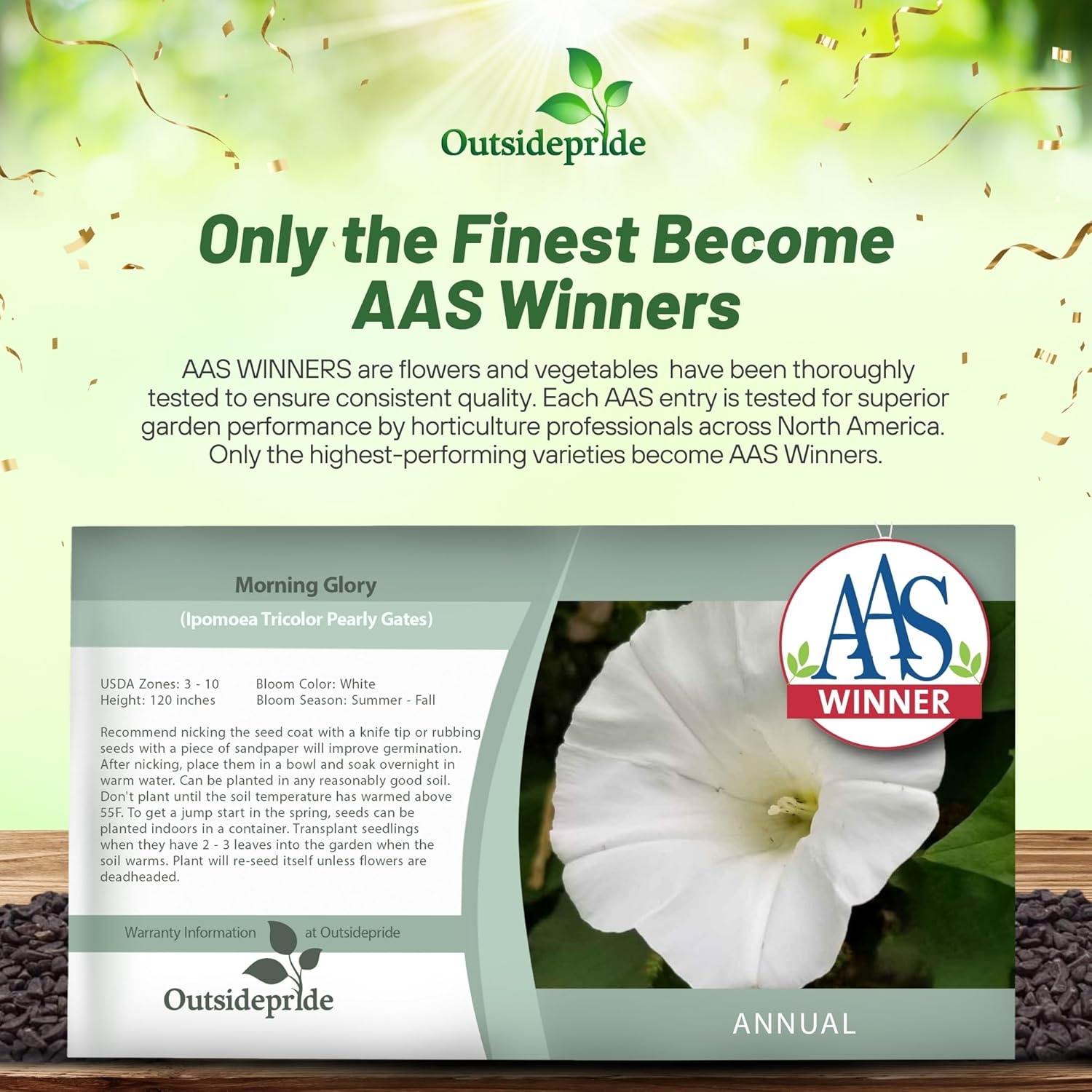




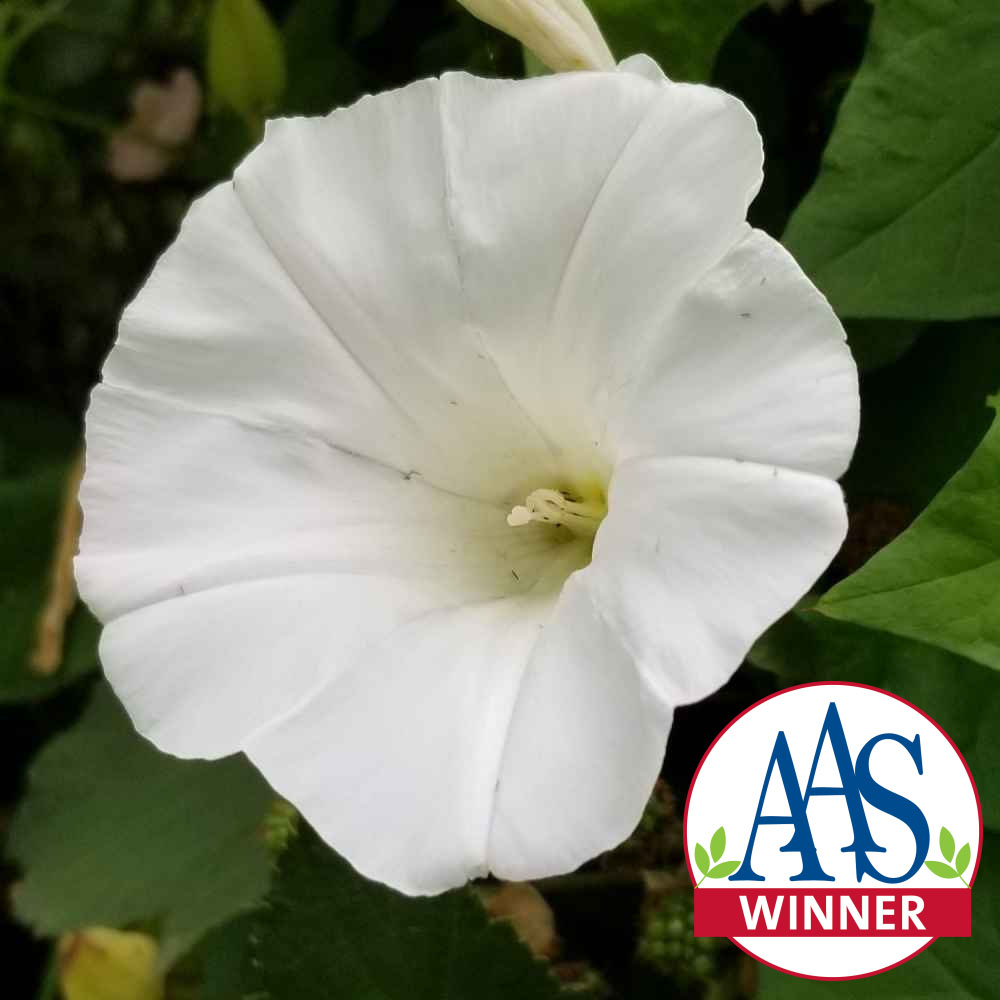


Morning Glory Seeds - Pearly Gates
SEASON
Annual
USDA ZONES
3 - 10
HEIGHT
120 inches
BLOOM SEASON
Summer through fall
BLOOM COLOR
White
ENVIRONMENT
Full sun to partial shade
SOIL TYPE
Poor quality, pH 6.1 - 7.8
DEER RESISTANT
No
HOUSE PLANT
No
AAS WINNER
1942
SEASON
Annual
USDA ZONES
3 - 10
HEIGHT
96 - 120 inches (vining)
BLOOM SEASON
Summer through fall
BLOOM COLOR
Blue
ENVIRONMENT
Full sun to partial shade
SOIL TYPE
Poor quality, pH 6.1 - 7.8
DEER RESISTANT
No
HOUSE PLANT
No
SEASON
Annual
USDA ZONES
3 - 10
HEIGHT
108 inches
BLOOM SEASON
Summer
BLOOM COLOR
Blue
ENVIRONMENT
Full sun to partial shade
SOIL TYPE
Not picky about soil type, pH 6.1 - 7.8
DEER RESISTANT
No
HOUSE PLANT
No
SEASON
Annual
USDA ZONES
3 - 10
HEIGHT
72 - 120 inches
BLOOM SEASON
Late spring to early fall
BLOOM COLOR
Cerise, Purple
ENVIRONMENT
Full sun to partial shade
SOIL TYPE
Not picky about soil type, pH 6.1 - 7.8
DEER RESISTANT
No
HOUSE PLANT
No
SEASON
Annual
USDA ZONES
3 - 10
HEIGHT
8 inches
BLOOM SEASON
Spring to late summer
BLOOM COLOR
Red
ENVIRONMENT
Full sun to partial shade
SOIL TYPE
Can tolerate poor soil, pH 6.1 - 7.8
DEER RESISTANT
No
HOUSE PLANT
No
SEASON
Annual
USDA ZONES
3 - 10
HEIGHT
8 inches
BLOOM SEASON
Spring to late summer
BLOOM COLOR
White
ENVIRONMENT
Full sun to partial shade
SOIL TYPE
Can tolerate poor soil, pH 6.1 - 7.8
DEER RESISTANT
No
HOUSE PLANT
No
SEASON
Annual
USDA ZONES
3 - 10
HEIGHT
8 inches
BLOOM SEASON
Spring to late summer
BLOOM COLOR
Rose
ENVIRONMENT
Full sun to partial shade
SOIL TYPE
Can tolerate poor soil, pH 6.1 - 7.8
DEER RESISTANT
No
HOUSE PLANT
No
SEASON
Annual
USDA ZONES
3 - 10
HEIGHT
8 inches
BLOOM SEASON
Spring to late summer
BLOOM COLOR
Deep blue
ENVIRONMENT
Full sun to partial shade
SOIL TYPE
Can tolerate poor soil, pH 6.1 - 7.8
DEER RESISTANT
No
HOUSE PLANT
No
About...
(Ipomoea Tricolor Pearly Gates) - Growing Pearly Gates morning glory seeds is easy. Because the flower seed has a hard seed coat, nicking the coat with a knife tip or rubbing the seeds with a piece of sandpaper will improve germination. After nicking the flower seeds, place them in a bowl and soak overnight in warm water.
MORE MORNING GLORY OPTIONS
Planting Directions
TEMPERATURE
70F
AVERAGE GERM TIME
7 - 21 days
LIGHT REQUIRED
No
DEPTH
1/4 inch
SOWING RATE
6 - 8 seeds per foot
MOISTURE
Keep seed moist until germination
PLANT SPACING
Thin to 12 inches


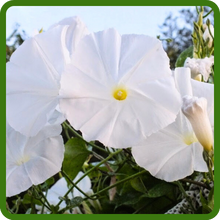
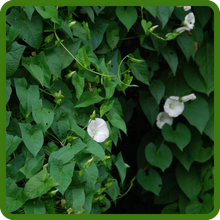
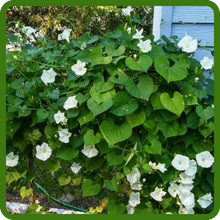
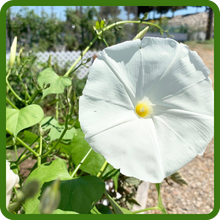

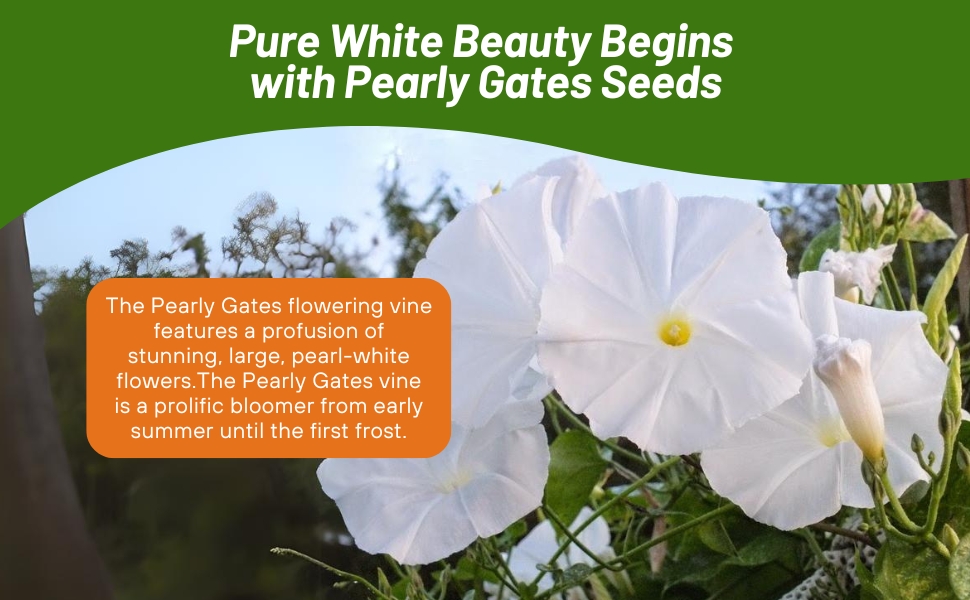

Morning Glory (Ipomoea Tricolor Pearly Gates) - The Pearly Gates flowering vine features a profusion of stunning, large, pearl-white flowers. The Pearly Gates vine is a prolific bloomer from early summer until the first frost. It also has elegant heart-shaped leaves that are attractive as well. It is a vigorous climber that thrives in the heat of summer, and it creates a lush, vertical accent in the flower garden. Provide a trellis or pergola, and this climber will climb it! You can even allow it to scramble through shrubs and borders. Morning Glory vine care includes deadheading as needed to prevent seeding and to ensure prolific bloom. If you want white morning glories to self-sow the following spring, then leave some of the dead flowers on the vine in order for it to drop its flower seed. Remove entire plant after first hard frost. 1942 AAS Flower Winner.
Common Questions
Is morning glory an invasive plant?
Morning glories freely reseed themselves and are rapid growers. Because of these traits it can become invasive.
Do morning glories come back every year?
Morning glories are grown as annuals in most climates.
Where is the best place to plant morning glory?
Plants grow best when planted in a spot with at least eight hours of unfiltered sunlight per day.
Should I fertilize my morning glory plants?
Yes, you should feed your plants with a low nitrogen fertilizer every 4-5 weeks throughout the growing season. If you notice a lack of blooms use a fertilizer that is high in phosphorus.
Do I need to provide a support structure for morning glory?
Yes, having a trellis or other support wherever you start your seeds, so the vines have something to grow up.
Do morning glories attract pollinators?
Yes, they are popular with butterflies and hummingbirds.
Planting Directions
TEMPERATURE
70F
AVERAGE GERM TIME
7 - 21 days
LIGHT REQUIRED
No
DEPTH
1/4 inch
SOWING RATE
6 - 8 seeds per foot
MOISTURE
Keep seed moist until germination
PLANT SPACING
Thin to 12 inches



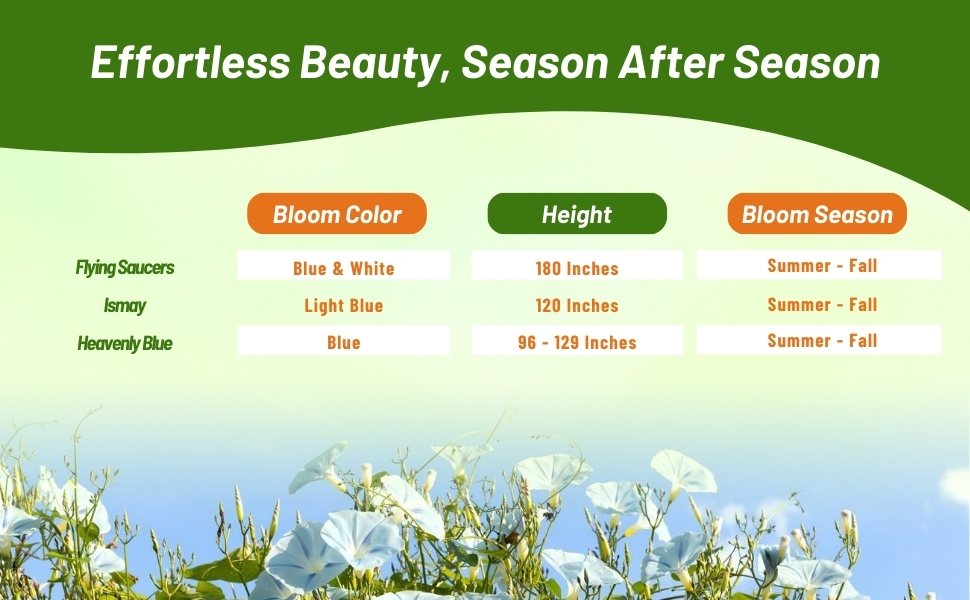

Morning Glory (Ipomoea Tricolor Heavenly Blue) - This popular variety can easily be grown from seeds. When people think of this flowering vine, they often think of Heavenly Blue with its intense sky blue blooms with white throats. The blooms are heavy from summer until frost, and it drops its own flower seeds to produce a display for next year's season. Typically, the flowers will open in the morning and then close again in afternoon. Heavenly Blue vine is perfect for covering unsightly buildings, tumbling over fences, or decorating any vertical garden structure from the mailbox to the lamppost.
Common Questions
Is morning glory an invasive plant?
Morning glories freely reseed themselves and are rapid growers. Because of these traits it can become invasive.
Do morning glories come back every year?
Morning glories are grown as annuals in most climates.
Where is the best place to plant morning glory?
Plants grow best when planted in a spot with at least eight hours of unfiltered sunlight per day.
Should I fertilize my morning glory plants?
Yes, you should feed your plants with a low nitrogen fertilizer every 4-5 weeks throughout the growing season. If you notice a lack of blooms use a fertilizer that is high in phosphorus.
Do I need to provide a support structure for morning glory?
Yes, having a trellis or other support wherever you start your seeds, so the vines have something to grow up.
Do morning glories attract pollinators?
Yes, they are popular with butterflies and hummingbirds.
Planting Directions
TEMPERATURE
70F
AVERAGE GERM TIME
7 - 21 days
LIGHT REQUIRED
No
DEPTH
1/4 inch
SOWING RATE
6 - 8 seeds per foot
MOISTURE
Keep seed moist until germination
PLANT SPACING
Thin to 12 inches





Morning Glory (Ipomoea Nil Blue Picotee) - The Japanese have cultivated this spectacular Blue Picotee morning glory vine. It grows readily from seeds and is very rewarding to have in the landscape. Ipomoea Nil Blue Picotee sports huge star-shaped blooms that are dark blue with a purple star and a white edge. Provide a structure for this vine to climb and very soon you will have a vertical accent for your landscape and a profusion of 5 inch blue flowers. Morning Glories are breathtaking vines to grow from flower seeds.
Common Questions
Is morning glory an invasive plant?
Morning glories freely reseed themselves and are rapid growers. Because of these traits it can become invasive.
Do morning glories come back every year?
Morning glories are grown as annuals in most climates.
Where is the best place to plant morning glory?
Plants grow best when planted in a spot with at least eight hours of unfiltered sunlight per day.
Should I fertilize my morning glory plants?
Yes, you should feed your plants with a low nitrogen fertilizer every 4-5 weeks throughout the growing season. If you notice a lack of blooms use a fertilizer that is high in phosphorus.
Do I need to provide a support structure for morning glory?
Yes, having a trellis or other support wherever you start your seeds, so the vines have something to grow up.
Do morning glories attract pollinators?
Yes, they are popular with butterflies and hummingbirds.
Planting Directions
TEMPERATURE
70F
AVERAGE GERM TIME
7 - 21 days
LIGHT REQUIRED
No
DEPTH
1/4 inch
SOWING RATE
2 - 3 seeds per plant
MOISTURE
Keep seeds moist until germination
PLANT SPACING
12 inches





Morning Glory (Ipomoea Nil Sunrise Serenade) - This unique morning glory features lovely ruffled double cerise 3 inch flowers that make a bold impact. Multitudes of these beautiful blooms cover the strong vining habit. Can be grown for trellises, containers and hanging baskets.
The vines of this recently rediscovered heirloom double morning glory grow to a mature length of 6 to 10 feet long, displaying hundreds of heart shaped leaves. The Sunrise Serenade Morning Glory, truly is one of the most stunning varieties that we have to offer and worthy of any flower garden.
Common Questions
Is morning glory an invasive plant?
Morning glories freely reseed themselves and are rapid growers. Because of these traits it can become invasive.
Do morning glories come back every year?
Morning glories are grown as annuals in most climates.
Where is the best place to plant morning glory?
Plants grow best when planted in a spot with at least eight hours of unfiltered sunlight per day.
Should I fertilize my morning glory plants?
Yes, you should feed your plants with a low nitrogen fertilizer every 4-5 weeks throughout the growing season. If you notice a lack of blooms use a fertilizer that is high in phosphorus.
Do I need to provide a support structure for morning glory?
Yes, having a trellis or other support wherever you start your seeds, so the vines have something to grow up.
Do morning glories attract pollinators?
Yes, they are popular with butterflies and hummingbirds.
Planting Directions
TEMPERATURE
70F
AVERAGE GERM TIME
7 - 21 days
LIGHT REQUIRED
No
DEPTH
1/4 inch
SOWING RATE
3 - 4 seeds per mound
MOISTURE
Keep seed moist until germination
PLANT SPACING
24 inches per mound





Dwarf Morning Glory Red Ensign (Convolvulus Tricolor Minor Red Ensign) - This vining plant will establish easily from morning glory seeds and grow quickly to create a neat little mound that is nicely suited for the flower bed, pots, planters and baskets. Red convolvulus plants look very sweet in window boxes and their flowers make a bright display. Convolvulus Red Ensign flowers are tri-colored with red and yellow throats with a white edge.
How to grow morning glories from flower seeds: Because Red Convolvulus seeds have a hard coat, nicking the seed coat with a knife tip or rubbing seeds with a piece of sandpaper will improve germination. After nicking the seeds, place them in a bowl and soak overnight in warm water for quicker germination. The following day sow the flower seeds directly outdoors after all danger of frost has passed.
Common Questions
Is morning glory an invasive plant?
Morning glories freely reseed themselves and are rapid growers. Because of these traits it can become invasive.
Do morning glories come back every year?
Morning glories are grown as annuals in most climates.
Where is the best place to plant morning glory?
Plants grow best when planted in a spot with at least eight hours of unfiltered sunlight per day.
Should I fertilize my morning glory plants?
Yes, you should feed your plants with a low nitrogen fertilizer every 4-5 weeks throughout the growing season. If you notice a lack of blooms use a fertilizer that is high in phosphorus.
Do I need to provide a support structure for morning glory?
Yes, having a trellis or other support wherever you start your seeds, so the vines have something to grow up.
Do morning glories attract pollinators?
Yes, they are popular with butterflies and hummingbirds.
Planting Directions
TEMPERATURE
70F
AVERAGE GERM TIME
7 - 21 days
LIGHT REQUIRED
No
DEPTH
1/4 inch
SOWING RATE
3 - 4 seeds per mound
MOISTURE
Keep seed moist until germination
PLANT SPACING
24 inches per mound





Dwarf Morning Glory White Ensign (Convolvulus Tricolor Minor White Ensign) - Grow this white flowering and mounding variety from seeds for colorful, hardy, compact bedding plants. Start the flower seeds over a larger area and create a lovely white Convolvulus ground cover. This vining plant is also perfect for containers or window boxes and will spill gracefully over the edges. It features 2 inch trumpet-shaped blooms that are white with a yellow throat. Growing morning glories is so rewarding, and they are prolific bloomers that will bloom all summer until frost.
Common Questions
Is morning glory an invasive plant?
Morning glories freely reseed themselves and are rapid growers. Because of these traits it can become invasive.
Do morning glories come back every year?
Morning glories are grown as annuals in most climates.
Where is the best place to plant morning glory?
Plants grow best when planted in a spot with at least eight hours of unfiltered sunlight per day.
Should I fertilize my morning glory plants?
Yes, you should feed your plants with a low nitrogen fertilizer every 4-5 weeks throughout the growing season. If you notice a lack of blooms use a fertilizer that is high in phosphorus.
Do I need to provide a support structure for morning glory?
Yes, having a trellis or other support wherever you start your seeds, so the vines have something to grow up.
Do morning glories attract pollinators?
Yes, they are popular with butterflies and hummingbirds.
Planting Directions
TEMPERATURE
70F
AVERAGE GERM TIME
7 - 21 days
LIGHT REQUIRED
No
DEPTH
1/4 inch
SOWING RATE
3 - 4 seeds per mound
MOISTURE
Keep seed moist until germination
PLANT SPACING
24 inches per mound





Dwarf Morning Glory Rose Ensign (Convolvulus Tricolor Minor Rose Ensign) - Grow Dwarf Morning Glories easily and quickly from flower seeds. Convolvulus tricolor has a mounding habit, and is well-suited as a flower bed plant where the 2 inch trumpet-shaped flowers will happily shine. Dwarf morning glory uses also include containers, baskets and window boxes. Rose Ensign features blooms that are tri-colored with rose and a yellow throat surrounded by a white edge. Plant seeds after soaking the seeds overnight. Seeding can be indoors or directly outdoors once frosts are over.
Common Questions
Is morning glory an invasive plant?
Morning glories freely reseed themselves and are rapid growers. Because of these traits it can become invasive.
Do morning glories come back every year?
Morning glories are grown as annuals in most climates.
Where is the best place to plant morning glory?
Plants grow best when planted in a spot with at least eight hours of unfiltered sunlight per day.
Should I fertilize my morning glory plants?
Yes, you should feed your plants with a low nitrogen fertilizer every 4-5 weeks throughout the growing season. If you notice a lack of blooms use a fertilizer that is high in phosphorus.
Do I need to provide a support structure for morning glory?
Yes, having a trellis or other support wherever you start your seeds, so the vines have something to grow up.
Do morning glories attract pollinators?
Yes, they are popular with butterflies and hummingbirds.
Planting Directions
TEMPERATURE
70F
AVERAGE GERM TIME
7 - 21 days
LIGHT REQUIRED
No
DEPTH
1/4 inch
SOWING RATE
3 - 4 seeds per mound
MOISTURE
Keep seed moist until germination
PLANT SPACING
24 inches per mound





Dwarf Morning Glory Royal Ensign (Convolvulus Tricolor Minor Royal Ensign) - Grow this deep blue mounding variety from seeds for colorful, hardy, compact bedding plants. Convolvulus Tricolor Ensign is also perfect for containers or window boxes. Royal Ensign features 2 inch trumpet-shaped blooms that are tri-colored with deep blue, a yellow throat and surrounded by a white edge. Blue Dwarf morning glory is a delight to see spilling over the edges of a planter box. These flower seeds benefit from being nicked with a knife or rubbed with sandpaper before an overnight soaking in water.
Common Questions
Is morning glory an invasive plant?
Morning glories freely reseed themselves and are rapid growers. Because of these traits it can become invasive.
Do morning glories come back every year?
Morning glories are grown as annuals in most climates.
Where is the best place to plant morning glory?
Plants grow best when planted in a spot with at least eight hours of unfiltered sunlight per day.
Should I fertilize my morning glory plants?
Yes, you should feed your plants with a low nitrogen fertilizer every 4-5 weeks throughout the growing season. If you notice a lack of blooms use a fertilizer that is high in phosphorus.
Do I need to provide a support structure for morning glory?
Yes, having a trellis or other support wherever you start your seeds, so the vines have something to grow up.
Do morning glories attract pollinators?
Yes, they are popular with butterflies and hummingbirds.































